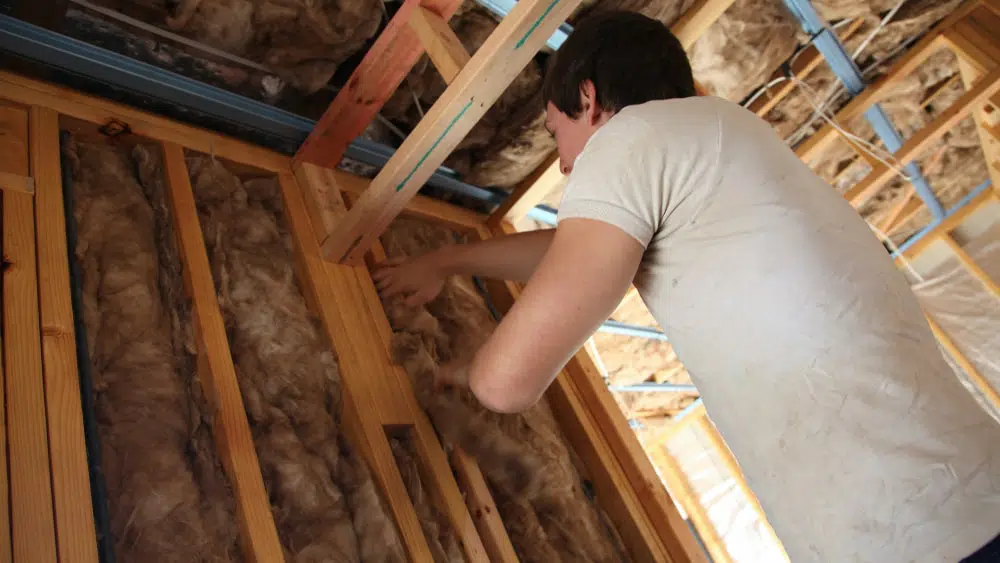Siding plays a crucial role in enhancing energy efficiency, comfort, and protection in residential buildings. This comprehensive guide explores the importance of siding in home insulation, discussing its functions, benefits, types, and considerations for homeowners looking to optimize their home’s thermal performance.
Lifetime Exteriors logo embodies durability and style with a clean, modern design. It features a timeless color palette and incorporates elements that symbolize quality craftsmanship and reliability, reflecting their commitment to excellence in exterior solutions and customer satisfaction.
Understanding Siding and Insulation
Definition and Purpose
- Exterior Cladding: Siding serves as the outer layer of a building envelope, shielding it from weather elements and enhancing aesthetic appeal.
- Insulation Enhancement: Improves thermal resistance, minimizing heat transfer between the interior and exterior of a home.
Energy Efficiency Benefits
- Heat Retention: Insulated siding reduces thermal bridging, preventing heat loss during colder months and maintaining interior comfort.
- Cooling Efficiency: Reflective properties and insulation layers in siding help regulate indoor temperatures, reducing reliance on heating and cooling systems.
Functions of Siding in Home Insulation
Thermal Regulation
- Insulation Types: Includes materials like vinyl, fiber cement, wood, and engineered composites, each offering varying levels of insulation and durability.
- R-Value: Measures the thermal resistance of siding materials, indicating their effectiveness in reducing heat transfer.
Moisture Management
- Water Resistance: Protects against moisture infiltration, preventing mold growth, rot, and structural damage.
- Vapor Permeability: Allows water vapor to escape, maintaining a dry and ventilated interior environment.
Types of Siding Materials
Vinyl Siding
- Affordability and Durability: Low-maintenance option with excellent weather resistance and color retention.
- Insulation Options: Available with integrated foam backing for enhanced thermal performance.
Fiber Cement Siding
- Fire Resistance: Non-combustible material offering superior fire protection and durability against harsh weather conditions.
- Insulation Properties: Can be paired with additional insulation layers for improved energy efficiency.
Wood Siding
- Natural Insulation: Provides inherent thermal resistance and aesthetic appeal, suitable for traditional and eco-friendly homes.
- Maintenance: Requires periodic painting or staining to preserve appearance and durability.
Engineered Siding
- Composite Materials: Combines wood fibers, resins, and polymers for enhanced durability, weather resistance, and insulation.
- Customization: Offers a range of textures, colors, and styles to match architectural preferences and design aesthetics.
Benefits of Insulated Siding
Enhanced Comfort
- Temperature Regulation: Maintains consistent indoor temperatures year-round, reducing cold spots and drafts.
- Noise Reduction: Absorbs sound vibrations, creating a quieter interior environment and enhancing overall comfort.
Cost Savings
- Energy Efficiency: Lowers heating and cooling costs by reducing energy consumption and improving HVAC system efficiency.
- Long-Term Investment: Durable siding materials require minimal maintenance and replacement, offering long-term cost benefits.
Considerations for Choosing Siding
Climate and Environmental Factors
- Regional Considerations: Select siding materials based on climate conditions, such as durability against extreme temperatures, humidity, or coastal exposure.
- Environmental Impact: Evaluate eco-friendly options and sustainability certifications for responsible material choices.
Installation and Maintenance
- Professional Installation: Ensure proper installation techniques to maximize insulation benefits and prevent moisture infiltration.
- Maintenance Requirements: Understand upkeep needs, such as cleaning schedules, painting, or sealing to preserve siding longevity.
Impact on Home Value and Curb Appeal
Aesthetic Appeal
- Architectural Style: Complements home design and enhances curb appeal with a variety of colors, textures, and profiles.
- Property Value: Improves resale value by enhancing exterior aesthetics and providing functional benefits that appeal to potential buyers.
Warranty and Insurance
- Product Guarantees: Verify manufacturer warranties for durability, performance, and insulation properties.
- Insurance Benefits: Siding upgrades may qualify for insurance discounts, reflecting improved home protection and reduced risk factors.
Future Trends and Innovations
Sustainable Solutions
- Energy-Efficient Technologies: Advances in insulated siding technologies enhance thermal performance and sustainability.
- Smart Integration: Integration with smart home systems for enhanced energy monitoring and efficiency optimization.
Conclusion: Optimizing Home Insulation with Siding
Siding serves as a vital component in home insulation, offering protection, energy efficiency, and aesthetic enhancement. By choosing the right siding materials, ensuring proper installation, and considering long-term maintenance needs, homeowners can optimize their home’s thermal performance, reduce energy costs, and enhance overall comfort. Embracing sustainable practices and innovative technologies in siding solutions contributes to a resilient, energy-efficient home environment for years to come.
